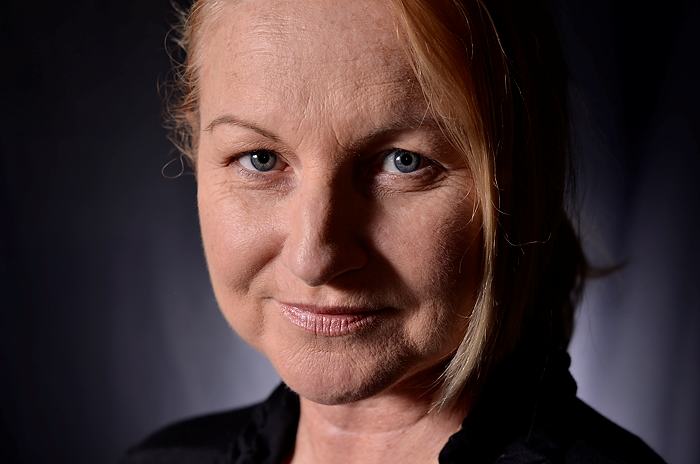Most of what I do these days is teach photography. Which means I often find myself in front of a bunch of people, doing a demo where I hope everything goes right. Occasionally, though, things go wrong, and that’s when life gets interesting.
A few weeks ago I was doing a lighting demonstration on stage. It’s a demo I’ve done a couple of dozen times without a hitch. But this wasn’t to be one of those times. The demonstration is showing how to get the flash off-camera using Nikon’s Creative Lighting System (CLS), in other words, wirelessly. Nikon’s had this capability in many of their cameras and speedlights for nearly a decade, and it’s a feature I use and love.
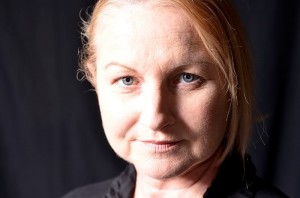 I ask for a volunteer from the audience (thanks again, Lois!) to come up on stage and work through a series of lighting examples. I start with on-camera flash, which is harsh and flat. Then I turn on “Commander” mode in my Nikon camera (a D7000 in this case) and turn on a Nikon Speedlight (SB-700 for this one) mounted on a stand to the side. And usually, everything looks great. But not this time. As soon as I switched to the SB-700 as my main light, it was overexposing. Now as I said, I’ve done this dozens of times without a problem, but this wasn’t to be one of those times. So I started to troubleshoot, on stage, in front of 150 people. Fun. But it actually turned into a good learning exercise. After all, things don’t always go right in photography, so you need to be able to find a solution. Here’s what I did:
I ask for a volunteer from the audience (thanks again, Lois!) to come up on stage and work through a series of lighting examples. I start with on-camera flash, which is harsh and flat. Then I turn on “Commander” mode in my Nikon camera (a D7000 in this case) and turn on a Nikon Speedlight (SB-700 for this one) mounted on a stand to the side. And usually, everything looks great. But not this time. As soon as I switched to the SB-700 as my main light, it was overexposing. Now as I said, I’ve done this dozens of times without a problem, but this wasn’t to be one of those times. So I started to troubleshoot, on stage, in front of 150 people. Fun. But it actually turned into a good learning exercise. After all, things don’t always go right in photography, so you need to be able to find a solution. Here’s what I did:
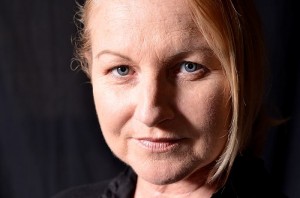 First I went into my camera’s menus to make sure the Commander mode was turned on, at the proper settings. All good there, but still overexposing. So I dialed back the power on the strobe three stops, but that only helped a little.
First I went into my camera’s menus to make sure the Commander mode was turned on, at the proper settings. All good there, but still overexposing. So I dialed back the power on the strobe three stops, but that only helped a little.
So I asked the audience, “What now? If your light’s too strong, and you can control its distance, moving it further from the subject will reduce its intensity.” So I moved the light a few feet further from Lois, and the exposure was a bit better, but still too “hot.”
Next step? I like to say that a lot of photography is troubleshooting, and most of the time it comes down to ISO, shutter and aperture. Since I was using flash, I changed my aperture from f/4 to f/5. That lessens the amount of light let into the camera, and it helped some too. I could have gone lower (to f/8 or f/11), but now I was starting to have fun with this.
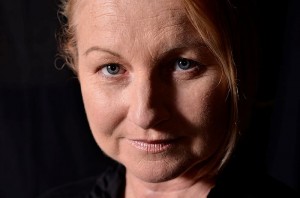 Then I asked, “What else can I change?” I was at 200 ISO, and lowering to 100 ISO meant my exposure would be halved, and that finally got me to a good exposure.
Then I asked, “What else can I change?” I was at 200 ISO, and lowering to 100 ISO meant my exposure would be halved, and that finally got me to a good exposure.
After that I finished the demo by adding a second speedlight to light the background to separate the outline of Lois’ head from the background.
As presenters, we talk about “dancing” on stage when things go wrong. And if you don’t freak out, it can be entertaining for the audience and educational too. At the end of the day, I got my favorite compliment of the weekend when a woman came up and said, “I think I learned more from watching you solve that problem than from anything else in the program.”
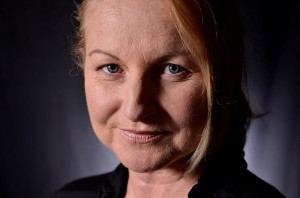 What went wrong in the first place? I’m not sure, but a few days later I think I figured out at least part of it. Telling my wife what happened, I remembered that when I added the background light, I used Commander mode to turn off the main light, to see exactly what the background light was doing. When I turned the main light back on, suddenly it was working properly. I had to take out the minus-3 exposure compensation I had set on it, and then the exposure was good. Looking back, I think cycling Commander mode Off and back On would have solved the problem right at the beginning. But then I wouldn’t have had all that fun!
What went wrong in the first place? I’m not sure, but a few days later I think I figured out at least part of it. Telling my wife what happened, I remembered that when I added the background light, I used Commander mode to turn off the main light, to see exactly what the background light was doing. When I turned the main light back on, suddenly it was working properly. I had to take out the minus-3 exposure compensation I had set on it, and then the exposure was good. Looking back, I think cycling Commander mode Off and back On would have solved the problem right at the beginning. But then I wouldn’t have had all that fun!

